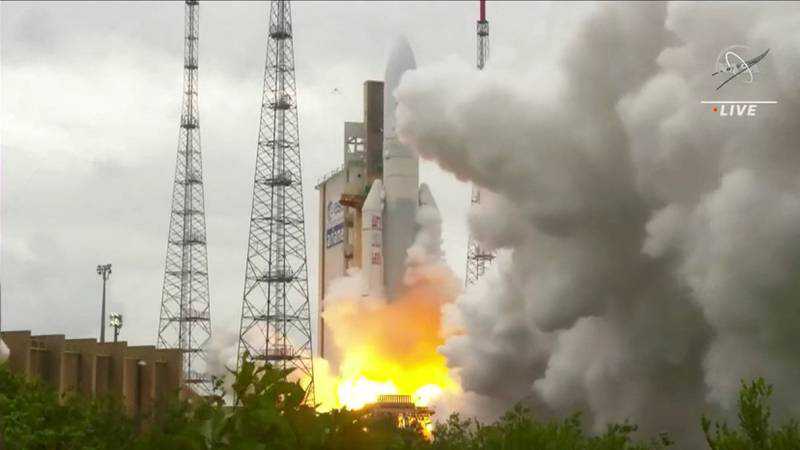Nasa’s James Webb telescope successfully launched into space
26 December, 2021

With rainclouds overhead, Nasa’s newest next-generation space observatory, the James Webb Space telescope, launched on Saturday from South America.
The $10 billion instrument is two decades in the making and will help answer questions about our solar system and look deeper into the universe in an unprecedented way.
As the rocket carrying the telescope took off, Nasa spokesman Rob Navias said: “Lift-off, from a tropical rainforest to the edge of time itself, James Webb begins a voyage back to the birth of the universe.”
“Over 10,000 people have worked on this telescope. All the hopes and dreams of those individuals and tens of thousands of scientists will benefit from this data,” Thomas Zurbuchen, Nasa associate administrator for the Science Mission Directorate, said ahead of the launch.
Developed by Nasa, the European Space Agency and the Canadian Space Agency, the telescope eventually settle into an orbit over 1.6 million kilometres away – about four times the distance between the Earth and the Moon.
Preparation for the project began in 1996, and construction was completed in 2016.
The telescope, which has faced several delays amid the coronavirus pandemic, is named after Nasa’s 1960s chief, and was described by the space agency as “the most complex space science observatory ever built”.
It is being billed as the successor to the Hubble space telescope, which orbits the Earth about 550 kilometres away.
“Webb will peer more than 13.5 billion years back into cosmic history to a time when the first luminous objects were evolving,” Nasa said.
“It’s the first observatory capable of exploring the very earliest galaxies, and could transform our understanding of the universe ... Webb will also study the atmospheres of planets orbiting other stars, and observe moons, planets, comets and other objects within our own solar system.”
“This data will reveal the molecules and elements that exist on distant planets and could unlock clues to the origins of our planet and life as we know it.”
Webb is about 100 times more sensitive than Hubble and is expected to revolutionise astronomers' understanding of the universe and our place in it.
Its instruments also make it ideal to look for potentially life-supporting atmospheres around numerous newly documented exoplanets – celestial bodies orbiting distant stars – and to observe worlds nearer to home, such as Mars and Saturn's icy moon Titan.
The telescope will mainly view the cosmos on the infrared spectrum, allowing it to gaze through clouds of gas and dust where stars are being born, while Hubble has typically operated on optical and ultraviolet wavelengths.
The Webb had been due to lift off from Europe's Spaceport in French Guiana on December 24, but local weather pushed that date back to Christmas Day.
It follows a postponement from an earlier December 22 targeted launch window that was delayed by electronic communications difficulties between the launch vehicle and its payload, Nasa said.
Source: www.thenationalnews.com
TAG(s):
